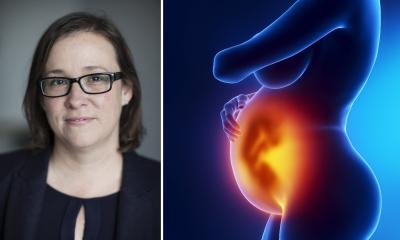© eddows – stock.adobe.com
News • Women's health
Endometriosis: exploring promising diagnostic tools
Endometriosis is a common, burdensome, chronic disease that affects 190 million women of reproductive age worldwide. Early diagnosis remains a major clinical and public health challenge.
The average time to diagnose endometriosis is seven years after the onset of symptoms, which include abdominal pain and cramping before, during and after menstruation, among others. Endometriosis occurs when tissues normally found inside the lining of the uterus migrate and grow in other locations, most commonly the ovaries, fallopian tubes and other organs. These circumstances may cause life-altering consequences such as chronic pain, infertility and quality of life.
In a commentary published in The Journal of Reproductive Medicine, Gynaecology & Obstetrics, researchers from Florida Atlantic University’s Schmidt College of Medicine and collaborators, conducted a PubMed search to identify promising approaches for early diagnosis of endometriosis.
Electroviscerography or EVG could detect unique myoelectric patterns associated with endometriosis, though this approach is promising but unproven
Charles H. Hennekens
“Currently, diagnosing endometriosis involves a thorough review of the patient’s medical history and physical examination,” said Panagiota “Yiota” Kitsantas, PhD, first and corresponding author as well as professor and chair of the Department of Population Health and Social Medicine, FAU Schmidt College of Medicine. “The most commonly used and accurate diagnostic methods are pelvic exams, abdominal ultrasound, MRI and laparoscopy. Laparoscopic surgery is considered the gold standard for diagnosing endometriosis by gynecologists, but it can be expensive and carries potential risks of surgical complications. Moreover, the accuracy of laparoscopy can vary based on the surgeon’s experience and the stage of the disease.”
The authors say the ideal test for early diagnosis of endometriosis would be to use symptom-based criteria to determine who should undergo testing and then set optimal cut-points to maximize sensitivity and specificity. A test with high predictive value would accurately confirm endometriosis if positive and exclude it if negative. Although less ideal tests may not provide definitive results, they can be useful in reducing the number of patients who need to proceed to more invasive procedures, like laparoscopy.
Endometriosis involves hormonal imbalances that trigger angiogenesis, apoptosis, immune responses, and inflammation. Diagnostic tools for endometriosis have been developed to detect biomarkers, such as mRNA fragments in blood and saliva, but these have shown low accuracy. “Non-invasive methods like MRI and transvaginal ultrasound are only effective for advanced stages of endometriosis,” said Charles H. Hennekens, MD, co-author, the first Sir Richard Doll Professor of Medicine and Preventive Medicine in the Departments of Medicine and Population Health and Social Medicine and senior academic advisor, FAU Schmidt College of Medicine. “Recent research has focused on a novel noninvasive method of detecting myoelectric activity in the gastrointestinal tract as a potential diagnostic tool. Electroviscerography or EVG could detect unique myoelectric patterns associated with endometriosis, though this approach is promising but unproven.”
Currently, there is no FDA-approved non-invasive test for endometriosis, and further analytic studies leading to peer-reviewed publications are needed to refine these emerging technologies and establish effective diagnostic criteria. “Early diagnosis of endometriosis remains a challenge, with a succession of promising approaches ultimately not bearing fruit thus far,” said Kitsantas. “Once new technologies such as EVG are more fully evaluated, they may give clinicians the post-test certainty they need to transition from symptom-based to diagnosis-based treatment.”
Quelle: Florida Atlantic University
19.08.2024










